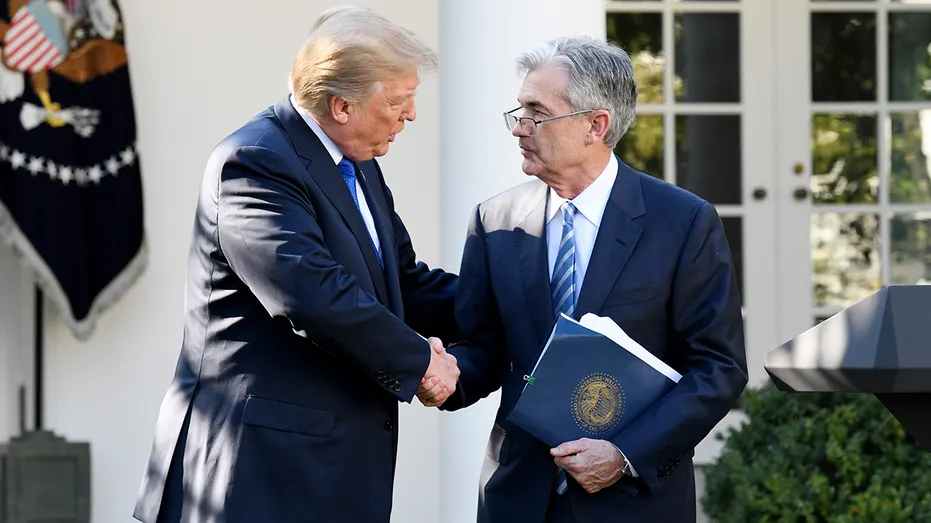Fed Wait and See Approach sets the stage for a growing confrontation in Washington. As the Federal Reserve holds interest rates steady, former President Trump is intensifying political pressure for cuts—creating a policy clash at the heart of the U.S. economy.
What Is the Fed Wait and See Approach?
The Federal Reserve’s “wait and see” strategy focuses on pausing rate changes until enough data emerges—especially around tariff impacts, inflation, and global economic signals. Chair Jerome Powell and other officials have made it clear that rushing into rate decisions could backfire. The Fed wants to wait for economic clarity before adjusting interest rates.
Trump’s Fierce Response
Donald Trump has openly attacked the Fed’s approach. He has called Powell “the WORST,” “a real dummy,” and “destructive.” Trump even suggested appointing himself to lead the Fed.
His argument is centered on two points:
- Cutting interest rates will reduce government borrowing costs.
- Other global central banks are already lowering their rates.
According to Trump, the Fed’s decision to hold rates is hurting American competitiveness and delaying much-needed stimulus.
The Central Bank’s Dilemma: Inflation vs. Growth
Inflation Concerns
Federal Reserve officials worry that new tariffs—particularly on imports—could raise prices for U.S. consumers. There is real concern that inflation might become sticky or persistent if action isn’t taken carefully. Several economists have warned that rushing to cut rates could pour fuel on the inflation fire.
Economic Slowdown
At the same time, the Fed has revised its economic growth forecasts downward. It now expects slower GDP growth as businesses and consumers respond to trade-related uncertainty. This creates the risk of stagflation—an unusual situation where inflation remains high while the economy slows.
Fed Forecast and Market Expectations
- The Federal Reserve has kept interest rates steady at 4.25–4.50% for four straight meetings.
- Its current projections suggest two quarter-point rate cuts by the end of the year.
- Market analysts expect the first cut could come in September, depending on data trends.
- Some Fed officials, however, remain divided—with a few advocating for holding rates higher for longer.
The message from the Fed is clear: they will move cautiously and will not be influenced by political noise.
Guarding Central Bank Independence
The battle over interest rates is not just about economics—it’s about principle. The Federal Reserve is structured to operate independently from political leaders. Its mission is to manage inflation and employment without direct interference from the White House or Congress.
Trump’s aggressive language, however, is testing that boundary. While it’s extremely rare (and legally difficult) to remove a Fed Chair before the end of a term, Trump has made no secret of his frustration with Powell and his desire to install someone more aligned with his views.
Data to Watch: What Could Trigger a Shift?
The Fed is watching several key indicators before making its next move:
- Tariff-driven inflation – If prices on imported goods begin to rise sharply, inflation could force the Fed to stay put or even consider rate hikes.
- Job market and economic growth – Signs of slowing hiring or weaker GDP could push the Fed toward a rate cut.
- Consumer and market sentiment – Confidence indexes, bond yields, and stock volatility will all play a role in shaping future decisions.
The Fed has made it clear: action will be based on data, not political tweets or pressure.
Impact on Everyday Americans
- Borrowers: If rates remain high, loans for homes, cars, and credit cards will stay costly.
- Savers: People saving money in high-yield accounts may continue to benefit from strong returns.
- Consumers: Higher prices due to tariffs may stretch household budgets.
Whether you’re borrowing or saving, the Fed’s decision-making has real effects on your financial life.

The Political Showdown: What’s Ahead?
The Fed Wait and See Approach remains at odds with Trump’s demand for immediate action. With Powell’s term ending in May 2026, the political focus is already shifting toward who might take his place. Names like Kevin Hassett and Kevin Warsh—both more aligned with Trump’s economic philosophy—have been floated.
If Trump were to return to the White House, his influence on the Fed could grow significantly.
Quick Comparison
| Aspect | Federal Reserve | Donald Trump |
|---|---|---|
| Interest Rates | Hold and monitor data | Cut immediately |
| View on Inflation | Cautious about rising prices | Downplays inflation concerns |
| View on Growth | Slowing growth is a concern | Stimulus needed now |
| Decision Approach | Based on data and projections | Based on urgency and instinct |
| Independence Stance | Must remain independent | Push for political alignment |
Final Verdict
The Fed Wait and See Approach reflects a careful, data-first philosophy. The Fed believes in staying the course until enough evidence emerges—on inflation, employment, and economic activity. But Trump is taking a more impatient approach, pressing the Fed to act now and cut rates.
This tug-of-war highlights a growing divide between institutional stability and political urgency. The Fed will likely continue on its cautious path—but the tension with Trump isn’t going away.
As economic data continues to evolve in the coming months, the Fed’s next move will shape not only markets but the political tone leading into the next election cycle.
Read Next – S&P 500 Nears Record: What’s Driving This Historic Rally?






